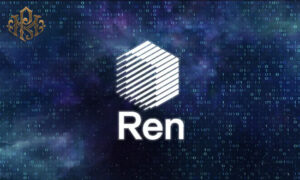
Close



What is Ren digital currency? Ren digital currency (REN) has emerged as a leading player in the decentralized finance space, offering a unique solution for interoperability between different blockchain networks. In this comprehensive article, we delve into the intricacies of Ren’s digital currency, exploring its origins, technology, uses, and the vision that drives the project. From its innovative approach to cross-chain asset transfer to its potential to unlock new opportunities in the world of decentralized finance, Ren represents significant progress in the quest for a truly connected and interoperable blockchain ecosystem.
In the rapidly evolving landscape of decentralized finance, interoperability between different blockchain networks has emerged as a critical challenge. Ren digital currency (REN) addresses this challenge by providing a decentralized protocol for the transfer of on-chain assets. By enabling the seamless exchange of digital assets between different blockchain platforms, Ren opens up new possibilities for liquidity, access and innovation in the DeFi space. In this article, we begin a comprehensive exploration of the Ren digital currency and explore its origins, technology, uses, and the transformative potential of the project.

Ren’s story begins with the vision of the founding team to create a decentralized protocol for transferring interoperable assets between different blockchain networks. Ren was founded by Taiyang Zhang, Loong Wang and Susruth Nadimpalli in 2017 with the aim of bridging the gap between isolated blockchain ecosystems and enabling seamless on-chain transactions.
The project was originally known as Republic Protocol and focused on creating a dark decentralized exchange for large cryptocurrency transactions. However, the team soon recognized the broader implications of their technology for enabling cross-chain interoperability, leading to the renaming of the project as Ren and the development of the Ren Virtual Machine (RenVM), a decentralized and trustless custodian for cross-chain assets. .
At the heart of the Ren cryptocurrency is RenVM, a decentralized virtual machine that facilitates the transfer of on-chain assets without the need for trusted intermediaries. RenVM uses a network of decentralized nodes called Darknodes to securely manage and transfer digital assets between different blockchain networks.
Key features of RenVM are:
Decentralization: RenVM operates as a decentralized network of Darknodes, each responsible for validating and executing transactions on the other chain. This decentralized architecture ensures the security and integrity of asset transfers without relying on a central authority or trusted third party.
Interoperability: RenVM supports interoperability between different blockchain networks, allowing users to seamlessly transfer assets across platforms such as Bitcoin, Ethereum, and the Binance smart chain. This interoperability opens up new possibilities for cross-chain DeFi applications, including decentralized exchanges (DEX), liquidity pools, and asset management protocols.
Privacy: RenVM offers privacy features that allow users to transfer assets in a confidential and non-confidential manner. Using zero-knowledge proofs (ZKPs) and other cryptographic techniques, RenVM ensures that transaction details remain private and anonymous, enhancing user privacy and confidentiality.

Ren digital currency offers a wide range of potential use cases and applications in various industries and sectors. Some of the key uses for Ren include:
Cross-asset transfer: Ren allows users to transfer digital assets between different blockchain networks, enabling seamless interoperability and liquidity between platforms. This opens up new opportunities for arbitrage, trading and asset management across decentralized finance applications.
Decentralized Exchanges (DEX): RenVM powers decentralized exchanges (DEX) that provide on-chain trading pairs and allow users to exchange assets between different blockchain networks without the need for trusted intermediaries. This increases liquidity and accessibility for decentralized exchange users, enabling them to access a wider range of assets and trading opportunities.
Liquidity Provisioning: RenVM facilitates liquidity provision for decentralized financial protocols by enabling the seamless transfer of assets between different liquidity pools and platforms. Liquidity providers can use Ren-enabled assets to engage in yield farming, liquidity mining, and other DeFi strategies, thereby earning passive income and maximizing their returns.
Complex Assets: RenVM enables the creation of complex assets or tokenized representations of assets from other blockchain networks on the Ethereum blockchain. These complex assets, such as renBTC (Bitcoin Complex) and renETH (Ethereum Complex), allow users to access and exchange assets from other blockchain networks in the Ethereum DeFi ecosystem.
Cross-chain lending and borrowing: Ren facilitates cross-chain lending and borrowing protocols that enable users to pledge assets on one blockchain network to borrow assets on another. This opens up new opportunities to use and monetize digital assets across various DeFi platforms and ecosystems.
Tokenization: RenVM supports the tokenization of various assets, including real estate, commodities, and securities, by enabling the issuance of complex tokens on the Ethereum blockchain. These tokenized assets can be traded, transferred, and used within the Ethereum DeFi ecosystem, opening up new ways to tokenize and digitize assets.
Despite its potential to transform the decentralized financial landscape, Ren digital currency faces several challenges and opportunities on the path to widespread adoption:
Competition: REN competes with other projects and protocols aimed at solving the challenge of on-chain interoperability, including Polkadot, Cosmos, and Complex Bitcoin. In order to differentiate itself and gain market share, Ren must continue to innovate and deliver unique value propositions to users and developers.
Regulatory uncertainty: The regulatory landscape around decentralized finance and on-chain asset transfers is still evolving, with regulatory authorities grappling with issues such as asset classification, compliance and enforcement. REN must carefully consider these regulatory challenges to ensure compliance with applicable laws and regulations while maintaining the privacy and decentralization of its protocol.